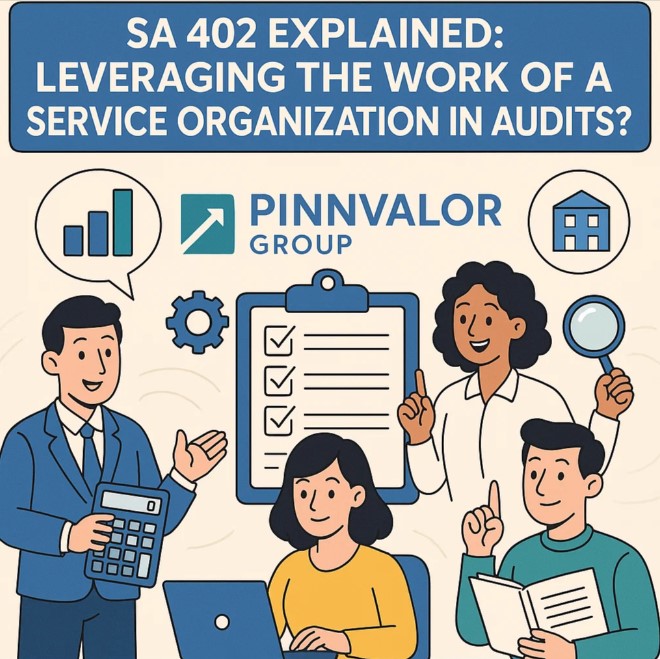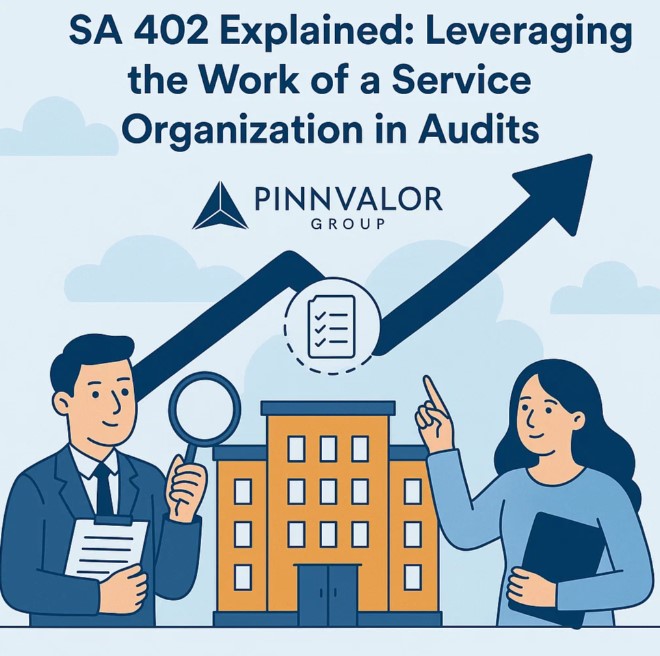
SA 402 Explained: Leveraging the Work of a Service Organization in Audits
In today’s interconnected business environment, organizations frequently outsource key functions such as payroll processing, IT management, or transaction processing to specialized service organizations. For auditors, this creates a unique challenge — how to obtain sufficient, appropriate audit evidence when part of the entity’s operations is managed by an external service provider. This is where SA 402 – Using the Work of a Service Organization comes into play.
Can auditors achieve reliable audit evidence when key functions are handled externally?
SA 402 empowers auditors to confidently use the work of service organizations, balancing efficiency with thoroughness for reliable audit outcomes.
What is SA 402?
SA 402 is a Standard on Auditing issued to provide guidance to auditors on how to approach audits when the entity being audited uses one or more service organizations to perform activities that are part of its information system relevant to financial reporting.
Instead of conducting direct audit procedures on these outsourced functions, auditors need to understand how to leverage the work performed by the service organization or rely on reports about their controls.
Why is SA 402 Important?
With the growth of outsourcing and cloud-based services, it’s increasingly rare for organizations to control all aspects of their operations internally. The risk of material misstatement in financial statements can arise if controls at service organizations are weak or not properly understood.
SA 402 helps auditors:
- Assess risks related to service organizations,
- Determine the nature and extent of audit procedures,
- Decide whether to place reliance on the service organization’s internal controls.
This ensures audit quality while avoiding unnecessary duplication of audit efforts.
Key Concepts in SA 402
1. Understanding the Service Organization’s Role
The auditor must obtain knowledge about the services performed by the service organization and their effect on the entity’s internal control. This includes understanding the nature of the services, the controls implemented, and how these impact the financial statements.
2. Risk Assessment Procedures
The auditor evaluates the risk of material misstatement related to the service organization’s activities. This risk assessment guides the auditor on whether additional procedures are needed.
3. Using a Service Auditor’s Report
A common approach under SA 402 is to rely on a Service Auditor’s Report, often known as a Type 1 or Type 2 Report (SOC 1 report). These reports provide information on the service organization’s controls and their effectiveness over a period.
- Type 1 report: Focuses on controls at a point in time.
- Type 2 report: Includes the operating effectiveness of controls over a period.
4. Performing Additional Procedures
If the auditor decides not to rely solely on the service auditor’s report, or if no such report is available, the auditor may perform additional procedures such as:
- Testing transactions processed by the service organization,
- Visiting the service organization to perform audit procedures directly,
- Evaluating the design and implementation of controls.

Practical Steps for Auditors Under SA 402
- Identify all service organizations used by the entity.
- Understand the nature and extent of the services provided.
- Evaluate the significance of the services to the entity’s internal control and financial reporting.
- Obtain and assess the service auditor’s report, if available.
- Decide on the nature, timing, and extent of audit procedures to be performed on transactions or controls related to the service organization.
- Document all findings, judgments, and conclusions regarding the work of the service organization.
Challenges in Applying SA 402
- Limited Access: Auditors often face restricted access to the service organization, making it difficult to perform direct audit procedures.
- Variability in Service Auditor’s Reports: The quality and scope of these reports can vary, affecting the level of reliance auditors can place on them.
- Communication Barriers: Coordination between the entity’s auditors and the service auditors requires clear communication and cooperation.
Conclusion
SA 402 offers a vital framework for auditors navigating the complexities of modern business arrangements involving service organizations. By understanding the roles and controls of these external providers and leveraging their audit reports, auditors can efficiently obtain reasonable assurance about the financial statements without duplicating efforts.
Incorporating SA 402 into audit planning enhances audit effectiveness and upholds the integrity of financial reporting in an increasingly outsourced world.
If you’re an auditor or finance professional dealing with service organizations, mastering SA 402 is essential to ensure comprehensive and reliable audits. Have you encountered challenges relying on service organizations in your audits? Share your experience in the comments!
